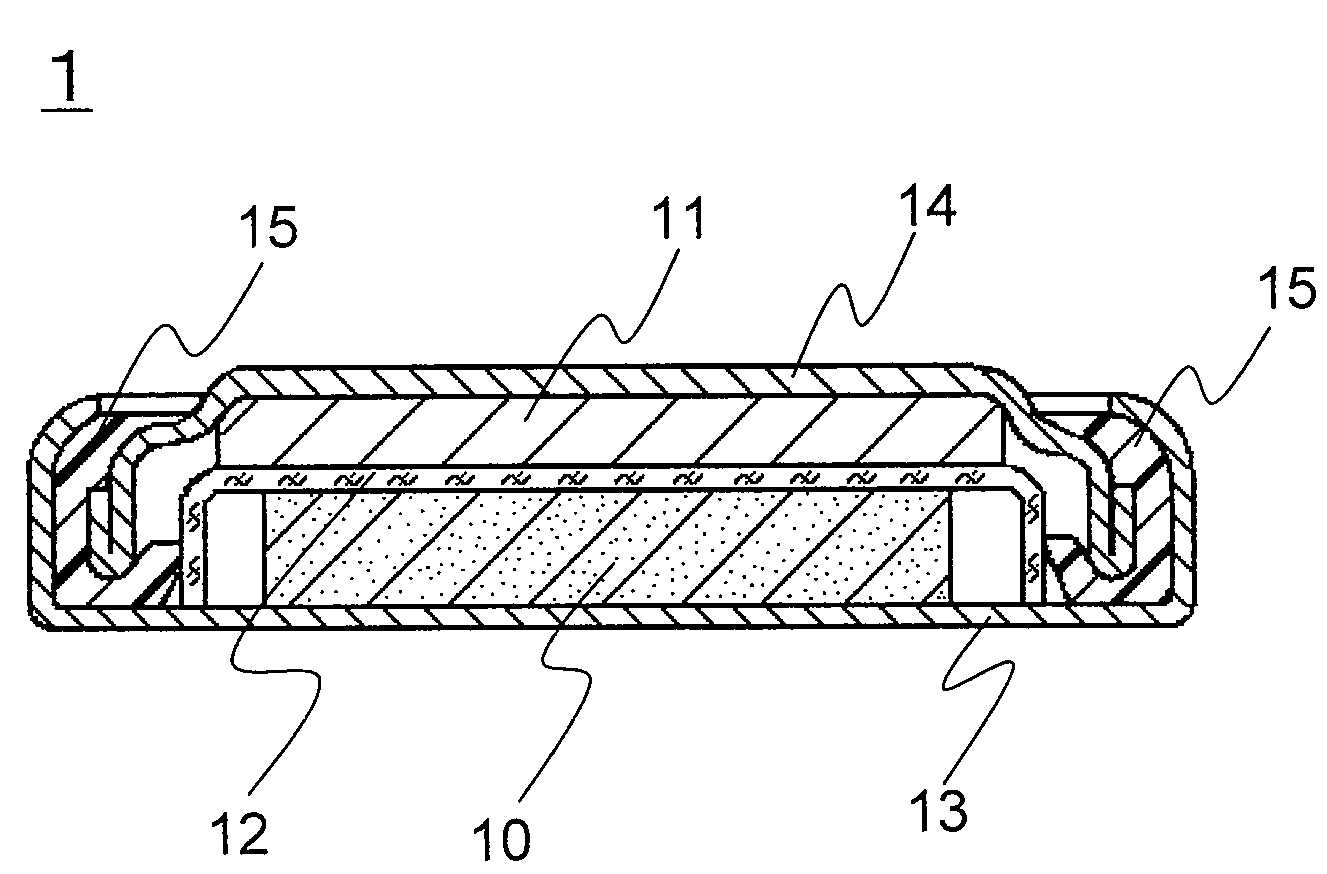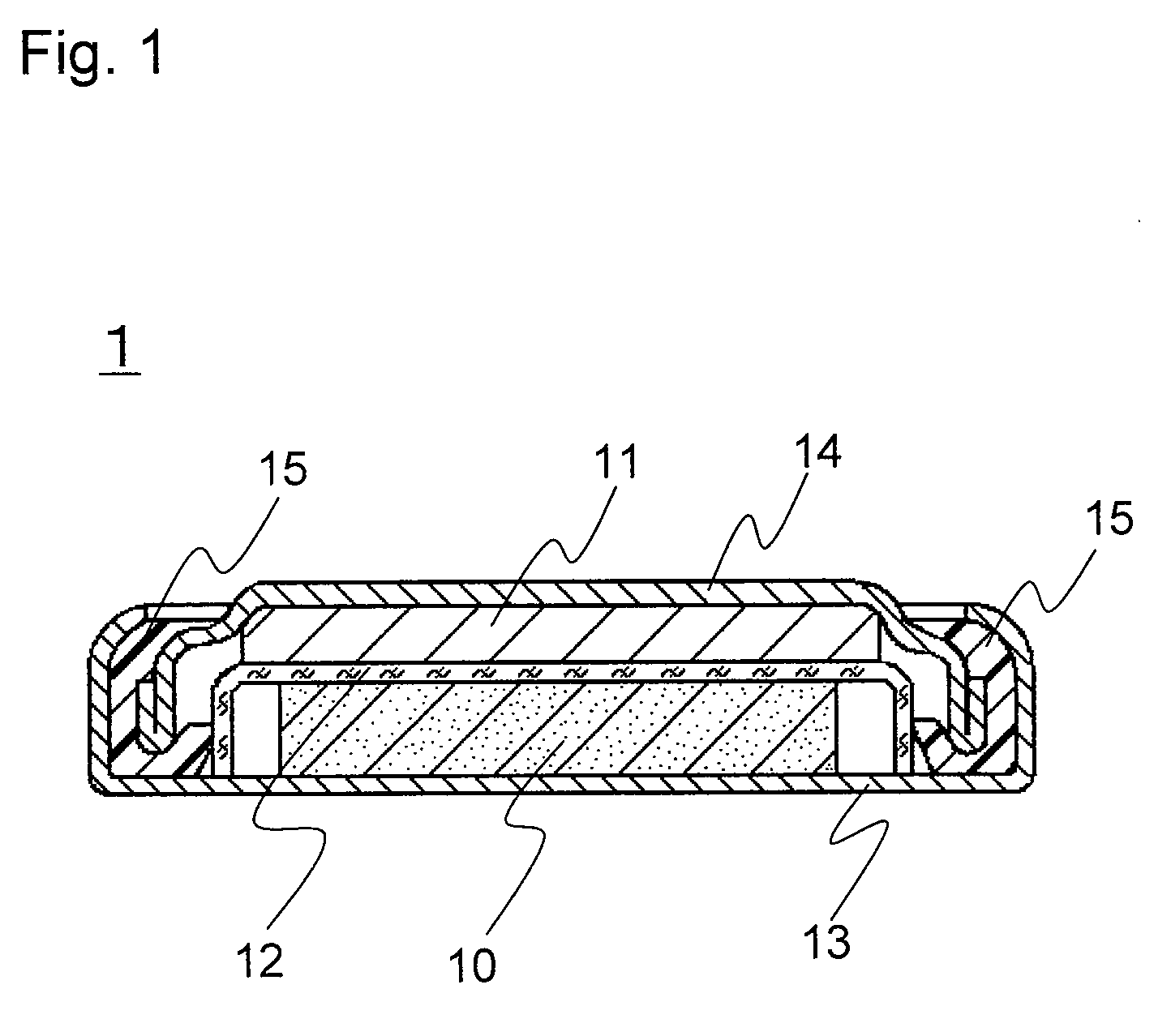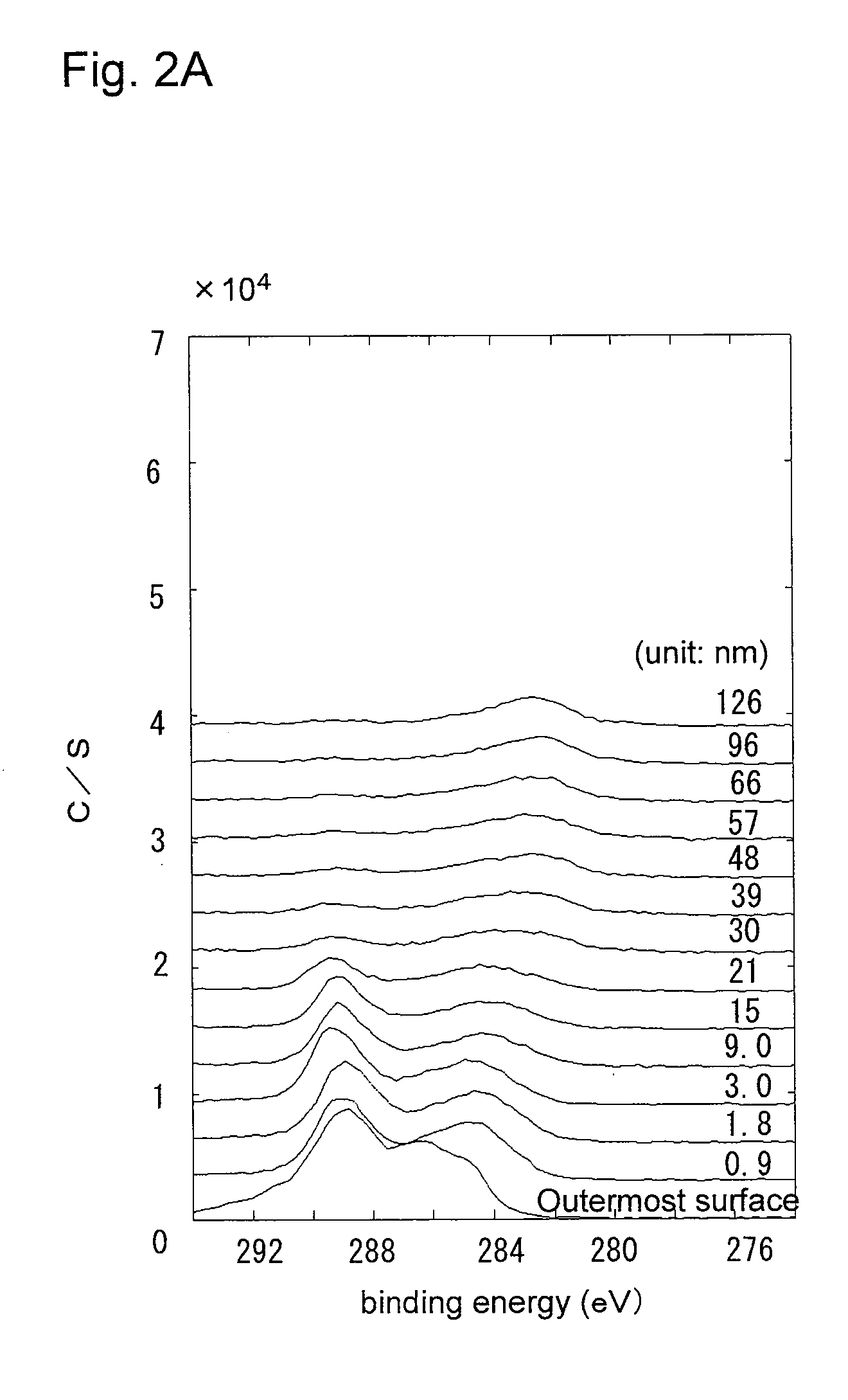Negative electrode for lithium primary battery and lithium primary battery
a lithium primary battery and negative electrode technology, applied in the direction of non-aqueous electrolyte accumulator electrodes, cell components, etc., can solve the problems of insufficient improvement of negative electrodes, significant voltage drop in the initial discharge stage, and low battery performance, and achieve good large-current discharge characteristics
- Summary
- Abstract
- Description
- Claims
- Application Information
AI Technical Summary
Benefits of technology
Problems solved by technology
Method used
Image
Examples
example 1
[0085]A coin-type lithium primary battery 1 of the invention as shown in FIG. 1 was produced in the following procedure.
(1) Production of Positive Electrode 10
[0086]Petroleum coke was fluorinated to prepare graphite fluoride ((CF1.0)n) as a positive electrode active material. The graphite fluoride, acetylene black (conductive agent), and styrene-butadiene rubber (SBR, binder) were mixed in a weight ratio of 100:15:6. This mixture was mixed with water and isopropyl alcohol and sufficiently kneaded to prepare a positive electrode mixture. This positive electrode mixture was dried at 70° C. and molded under pressure using a predetermined mold and a hydraulic press, to obtain a pellet with a diameter of 16 mm and a thickness of 3 mm. This pellet was dried at 100° C. for 12 hours to obtain the positive electrode 10.
(2) Production of Negative Electrode 11
[0087]A lithium disc (thickness 2.6 mm and diameter 12.7 mm) was mounted on the inner face of a stainless steel negative electrode case ...
example 2
[0091]A coin-type lithium primary battery 1 of the invention was produced in the same manner as in Example 1, except that a negative electrode 11 was produced as follows.
[Production of Negative Electrode 11]
[0092]In a glove box filled with a gas mixture of argon gas and CO2 gas (CO2 concentration: 3000 ppm), a lithium ingot was extruded to a thickness of 1.3 mm and a width of 20 mm, to obtain a lithium metal having a 10-nm thick lithium carboxylate layer on the surface. The lithium carboxylate layer contained lithium carbonate. This lithium metal was punched out to a disc of 18.0 mm in diameter, which was then pressed to the inner face of a stainless steel negative electrode case 14. In the same manner as in Example 1, an acetylene black powder (DENKA BLACK) was placed on the surface of the lithium carboxylate layer to form a carbon layer, so as to obtain the negative electrode 11.
example 3
[0093]A coin-type lithium primary battery 1 of the invention was produced in the same manner as in Example 1, except for the use of a carbon black powder (trade name: carbon ECP, mean primary particle size 39.5 nm, available from Lion Corporation) instead of the acetylene black powder (DENKA BLACK).
PUM
 Login to View More
Login to View More Abstract
Description
Claims
Application Information
 Login to View More
Login to View More - R&D
- Intellectual Property
- Life Sciences
- Materials
- Tech Scout
- Unparalleled Data Quality
- Higher Quality Content
- 60% Fewer Hallucinations
Browse by: Latest US Patents, China's latest patents, Technical Efficacy Thesaurus, Application Domain, Technology Topic, Popular Technical Reports.
© 2025 PatSnap. All rights reserved.Legal|Privacy policy|Modern Slavery Act Transparency Statement|Sitemap|About US| Contact US: help@patsnap.com



